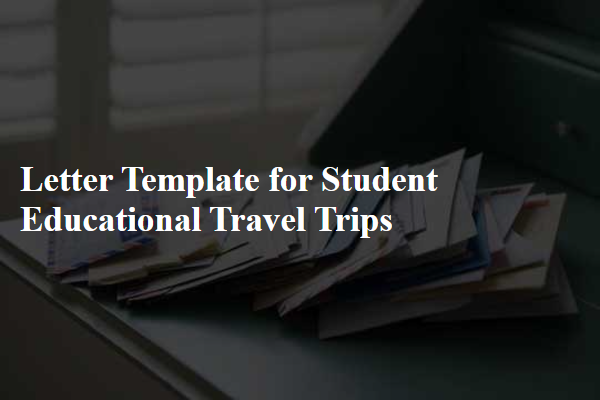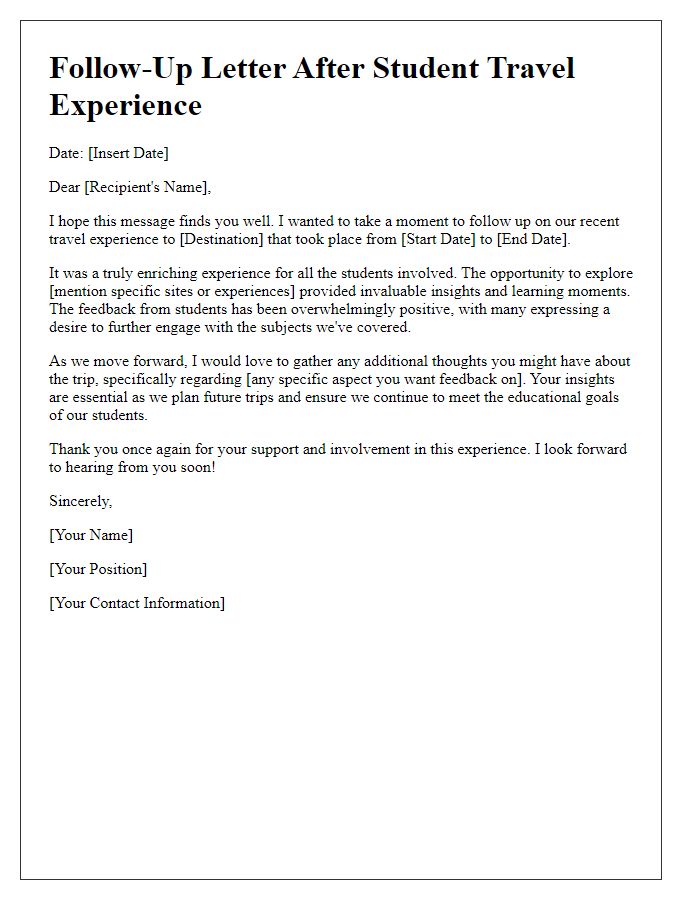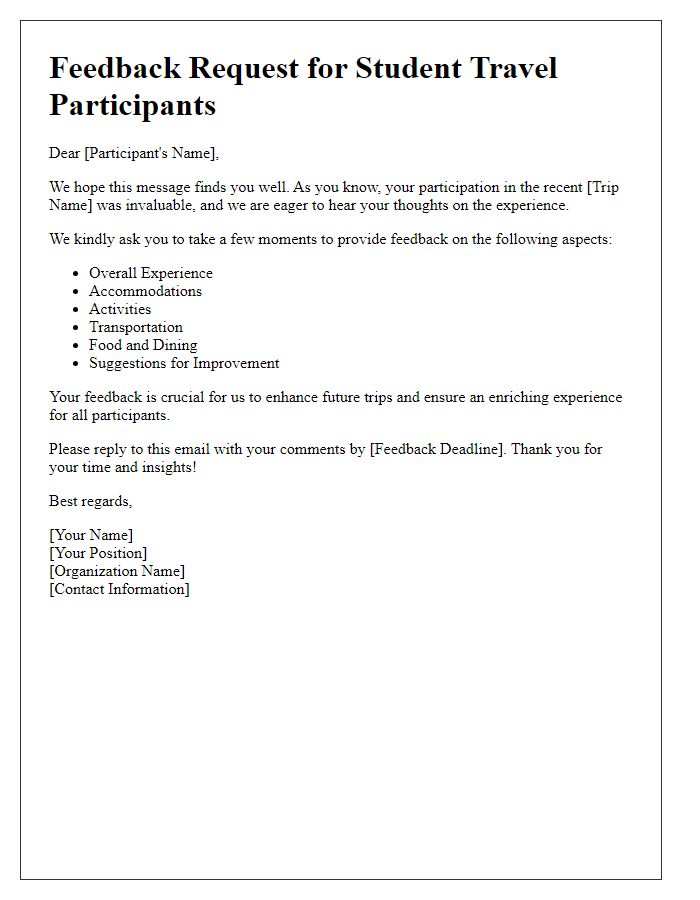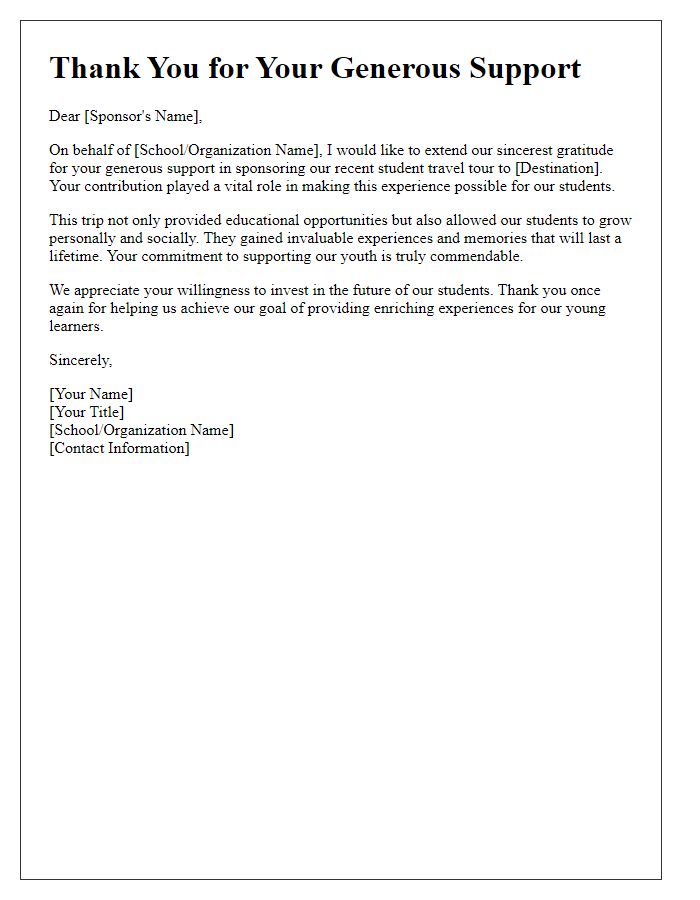Are you excited about the prospect of educational travel trips that can enrich your learning experience? These trips offer a unique blend of adventure and education, allowing students to explore new cultures while enhancing their academic knowledge. Imagine wandering through historical sites, engaging with local communities, and learning in a hands-on environment. If you're curious about how to plan the perfect educational trip, keep reading for valuable insights and tips!

Detailed Itinerary
The detailed itinerary for an educational travel trip to Washington, D.C., from April 10 to April 15, includes visits to significant historical sites and museums. Day one includes arrival at Ronald Reagan Washington National Airport (DCA), followed by a guided tour of the Lincoln Memorial, honoring the 16th President, with its iconic 19-foot tall statue. Day two features a visit to the Smithsonian National Air and Space Museum, showcasing over 60 spacecraft and airplanes, where students engage in interactive exhibits. Day three includes a trip to the United States Capitol, the seat of the legislative branch, with educational sessions on the importance of democracy. Day four presents an exploration of the National Museum of American History, which highlights artifacts like the original Star-Spangled Banner and contributions of American innovators. Finally, day five concludes with a reflective group session at The National World War II Memorial, honoring the 16 million people who served in the armed forces during the conflict. Each day includes structured time for reflection and discussion to enhance educational value.
Safety Protocols
Educational travel trips for students often involve numerous safety protocols to ensure the well-being of participants. During excursions, adherence to guidelines set by schools or organizations is crucial. Common protocols include a mandated buddy system, ensuring that students travel in pairs or groups to enhance safety. Designated adult chaperones (typically one for every ten students) are required to supervise activities, monitor behavior, and provide immediate assistance in emergencies. Health precautions, such as up-to-date vaccinations or travel insurance policies, are emphasized to safeguard against illnesses. Field trip itineraries, with defined locations (such as museums or historical sites), typically include emergency contact details and evacuation plans tailored for specific venues. Regular safety briefings before departure educate students on protocols, potential risks, and appropriate responses during unforeseen events.
Educational Objectives
Educational travel trips provide students with unique opportunities to explore historical sites, cultural landmarks, and geographical wonders. These journeys, like the annual trip to Washington, D.C., where students can visit the Capitol Building and the Smithsonian museums, aim to enhance learning through firsthand experience. Engaging in local community service projects during trips to destinations like Costa Rica fosters a deeper understanding of environmental issues and cultural diversity. Moreover, interactions with experts, such as historians or ecologists, can offer practical insights into academic subjects like history and science, enriching the educational experience. Structured itineraries designed to align with curriculum goals ensure students develop critical thinking and collaboration skills, preparing them for future academic and personal endeavors.
Accommodation and Meals
Educational travel trips often include arrangements for accommodation and meals, crucial for student comfort and well-being. Hotels or hostels may provide shared rooms for students, ensuring a budget-friendly option generally under $100 per night. Meal plans can vary, with options ranging from cafeteria-style dining to local restaurant experiences, potentially costing $15 to $30 per meal. Specific dietary needs can often be accommodated, ensuring all students, including those with allergies or dietary restrictions, have suitable food options. Final itineraries often include group meals which foster social interaction and enhance the educational experience, allowing students to bond over shared culinary adventures in diverse locations.
Parental Consent and Contact Information
Educational travel trips require parental consent to ensure student safety and communication. Consent forms typically include details about the trip destination, such as the historical significance of Washington, D.C., or the cultural experiences of New York City, along with dates and itinerary specifics. Contact information is crucial for emergencies and might include home phone numbers and personal email addresses for parents. Additionally, it is important to outline any medical conditions or allergies associated with students to facilitate proper care during the trip. Clear instructions about drop-off and pick-up locations, such as school grounds or designated parking areas, enhance organization and security.
Letter Template For Student Educational Travel Trips Samples
Letter template of request for educational travel permission for students

Letter template of informational notice for parents about student travel

Letter template of consent form for students participating in educational trips

Letter template of follow-up communication after student travel experience

Letter template of invitation for community support for educational travel

Letter template of scholarship application for student educational trips








Comments